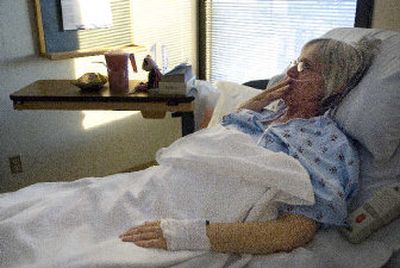Hospitals show price tags

Cost has long been one of the least understood and most mysterious aspects of health care.
Empire Health Services, which operates Deaconess Medical Center and Valley Hospital and Medical Center, and the Washington State Hospital Association hope to be more transparent about their operations with the creation of Web sites that show what their hospitals charge for commonly performed procedures.
The Idaho Hospital Association is in early talks about a similar statewide Web site, according to a spokeswoman.
But consumer advocates warn that the data has limited utility for the average health care consumer.
“It’s hard to be clear about what they’re showing to the average consumer looking at the data,” said Joshua Welter, the lead organizer for Washington Community Action Network, a grassroots organization that focuses on social justice issues.
Empire Health Services launched Web sites for both Deaconess and Valley Hospital, called “Price Check,” at the beginning of October. The sites feature low-, average- and high-range charges for the top 25 most commonly performed procedures, in addition to how many of the procedures are performed at both facilities.
An Empire Health spokeswoman said Price Check is part of the organization’s effort to make more information available to consumers. “The industry as a whole is trending towards transparency and pricing is just one of those areas,” said Christine Varela.
The Washington State Hospital Association will launch next month a site that will provide the average prices of the top 100 most commonly performed procedures at every hospital statewide, in addition to the number of procedures the hospital performs, allowing consumers to compare charge data from hospital to hospital.
“It’s just something that people want,” said Cassie Sauer, the Seattle-based association’s spokeswoman. “We have the data and we want to give it to them.”
Varela called price data “one piece” of information consumers should use in determining where to get their health care.
But Welter said the data is not useful in determining what most insured patients will pay for a particular procedure. That’s because insurance companies typically negotiate rates that are far below what the hospital charges.
“Hospital administrators will tell you that the gross charges will be meaningless because it’s not what most people pay,” he said.
Sauer acknowledged that the information the sites provide is probably not the data that the majority of consumers want.
“If you’re going to have surgery, you want to know what you’re going to have to pay, not what the hospital’s going to charge,” she said.
But Varela said the listed prices only represent a “starting point” and emphasized that people should have a conversation with their insurers — a cautionary note included on both Web sites. She added that part of the site’s objective is to get people in the mindset of thinking about how they are going to pay for health care.
“It gets folks talking about what the procedure is going to cost,” she said. “If they call their insurance companies ahead of time, hopefully they’ll get some idea of what their financial responsibility will be after the course of treatment ends, giving them an opportunity to plan and being able to concentrate on just getting well.”
While the information might not be particularly useful for people who are insured, Lisa McGiffert, a senior policy analyst for Consumer’s Union in Texas, said it would be useful for people who have to pay out-of-pocket for a procedure, such as the uninsured, or people whose insurance doesn’t cover a treatment for a pre-existing condition. In the state of Washington, about 13 percent of people are uninsured, according to a 2005 survey by the U.S. Census Bureau.
“More people are paying out of pocket costs these days,” she said.
McGiffert urged those without coverage to first seek out charity care options and to try and negotiate a lower rate with the hospital. Charge rates could inform these negotiations.
The hospital association’s Web site, which will allow patients to compare charges among hospitals, may allow patients to seek out other options, she added.
Sauer said the information, particularly information about how much of a certain type of procedure a hospital performs, could also be used by policy makers looking at trends in health care. Additionally, insurers could use the information to determine where to send patients who need a particular kind of procedure if they find that one hospital performs a lot of that procedure.
Both McGiffert and Welter applauded the efforts of the hospitals and the association to make charge information more readily available.
“It’s certainly a good thing for them to come forward and putting that information out there,” McGiffert said. “Through putting this out, hopefully they’ll be more clear on what it means.”
But Welters said other types of information that more closely correlate to what most people pay for treatment would be better. “What would be really useful information would be to compare what their patients who are uninsured are paying for their care versus what the high-powered insurance companies are paying versus what costs the hospitals are actually incurring,” said Welter. This information, Welter said, would better allow uninsured patients to negotiate a fair price.
“We certainly are in favor of greater transparency and removing barriers to information,” he said. “But we’d like it to be useful information.”